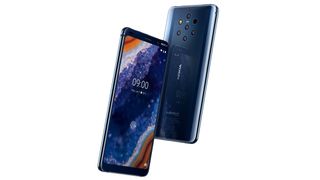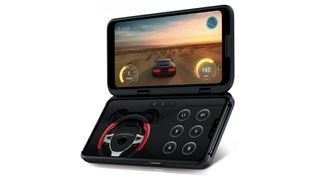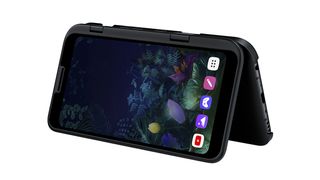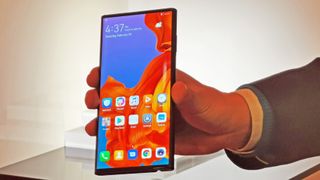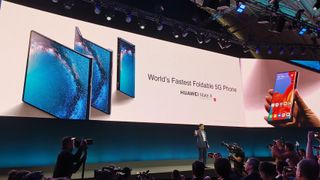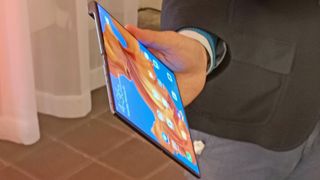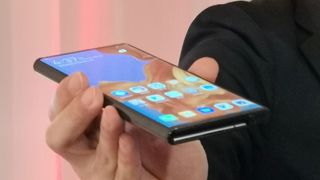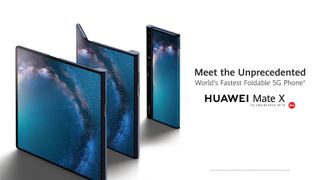MWC 2019 is here. Or at least it is if you're a journalist rushing between pre-event briefings. MWC (Mobile World Congress) is where the phone industry descends on Barcelona to talk shop, when not sat in traffic jams. That means mucho smartphone launches and exciting developments with high-speed 5G devices and 5G networks.
In MWC years gone by we've seen flagship handsets like the Samsung Galaxy S9 and LG G6 make their debut, and MWC 2019 will be our best chance yet to see what today's biggest phone makers have to offer for the next 12 months.
Samsung released its big phones at its Unpacked event this year but there is still a huge buzz around MWC 2019. That's because this is the the year of folding phones and 5G, which both feel new and important, and also because the new breed of Chinese mobile brands are all innovating like crazy at the moment, finding ways to pack new and cutting-edge features into often comparatively affordable phones.
WHEN IS MWC 2019?
This year Mobile World Congress is happening from Monday 25 February to Thursday 28 February. Some of the major players usually schedule press events beforehand, so news is going to start appearing on Saturday 23 February and Sunday 24 February.
Everything happens in Barcelona, primarily at the Fira Gran Via event hall. The show isn't open to the public, by the way – you have to be in the industry or a member of the press to get a ticket, but we'll be there and we'll keep you right up to date with everything that's happening.
HUAWEI AT MWC 2018
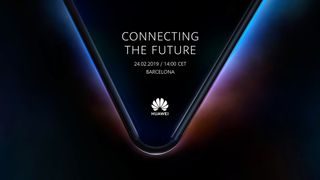
Huawei's teaser image for MWC 2019
If the big stories of MWC and smartphones in general in 2019 are 5G and folding phones then Huawei seem to have it nailed, as it's just formally announced the Huawei Mate X, which is both foldy, and 5G-ified. Screen stats: there's a 6.6-inch front screen with 19.5:9 aspect ratio, a 6.38-inch rear screen with a 25:9 aspect ratio and when you fully unfold the X, you're presented with an 8-inch tablet, 'FullView' screen with 8:7.1 aspect ratio and 2,480 x 2,200 pixel resolution.
We'll have a hands-on review shortly but if appearances are anything to go by, you might want to reconsider any Samsung Fold shopping plans you had.
Before they got on to the Mate X, there was also word of the Huawei Matebook X Pro, which looks set to give Apple's MacBook Pro a run for its money. It's a Windows laptop that weighs just 1.33kg and has a battery that lasts 12-14 hours.
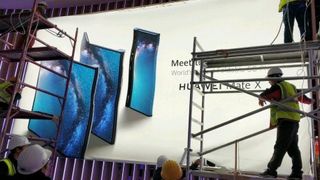
Could this be an elaborate double bluff? (No).
There was a rather heavy 'hint' of this in Huawei's billboard at the MWC venue, so this did not come as a huge shock. The image on the invite further up also looks a lot like a folding device with the glowing screen on the outside, now we come to think of it.
We know Huawei will not be launching its Huawei P30 and P30 Pro phones at MWC 2019, as those handsets have been confirmed by Huawei for a Paris launch on March 26.
As well as a folding, 5G Huawei handset at MWC 2019, we may also see a folding Huawei phonewithout 5G, and a 5G phone that doesn't fold. Who knows?
LG AT MWC 2019
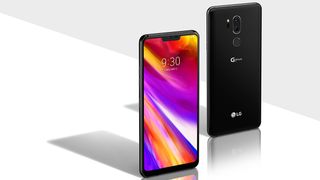
LG has said it will unveil a 5G handset at Mobile World Congress 2019
When it comes to MWC 2019, the BIG news from LG is that it has unveiled its first ever 5G phone, the (deep breath, now) LG V50 ThinQ 5G.
While the new device packs lighting fast 5G connectivity, which would make it a direct rival to Samsung's 5G Galaxy S10 and Huawei' Mate X 5G (see above) in 2019, contrary to certain rumours in the run-up to MWC, there's no camera system that packs 16 lenses. It just has a frankly piffling three rear-mounted cameras and two front-facing ones. What is the world coming to?
It's not really a folding phone in the way that the Mate X and Fold are, but there is the option of attaching a second screen, to give you something a bit like a next-gen Nintendo DS.
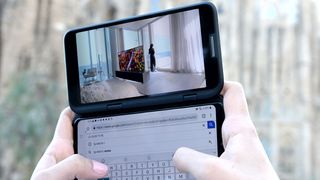
The 5G LG phone can be hooked to an extra panel, turning it very successfully into a Nintendo Game + Watch for the 21st century
What hasn't been announced about the new 5G LG phone, though, is its internal hardware specs. However, the rumour on the mobile grape vine right now is that it will come loaded with Qualcomm's new flagship Snapdragon 855 processor, as well as a beefy 4,000 mAh battery.
Unlike some 5G devices that have already been announced, LG has also confirmed that the phone will be available outside of South Korea, too, with the European and North American markets a big focus.
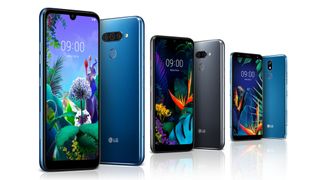
The LG Q60, the LG K50 and the LG K40
Also unveiled were the LG G8 ThinQ as well as r other mid-range devices.
While the G8 ThinQ isn't as expensive or as flashy as the 5G handset, it will feature an innovative technology that utilises the phone’s OLED display as an audio amplifier. Crystal Sound OLED (CSO) repurposes the display as a diaphragm, vibrating the entire surface to produce what LG promises is "sound with impressive volume." We're looking forward to trying it with some heavy dubstep at the launch.
Three additional mid-range devices have also been confirmed for an MWC launch by LG: the LG Q60, the LG K50 and the LG K40. The Q60 and K50 feature a 6.26-inch screen while the K40 has a smaller 5.7-inch display. The LG Q60 sports three rear cameras, the K50 has dual rear cameras and the K40 has a single rear camera.
Both the LG Q60 and LG K50 are powered by a 3,500mAh battery while the K40 gets a smaller 3,000mAh unit.
All three handsets feature a dedicated Google Assistant button, fingerprint sensor and DTS:X 3D Surround Sound.
NOKIA AT MWC 2019
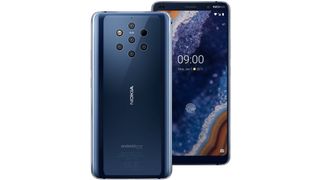
Nokia 9 Pureview has an arguably excessive 5-camera, 60-megapixel, 2x colour and 3x monochrome array stuck to its rear end
While LG's new 5G flagship might only have had a mere 2 front-facing cameras and 3 rear ones, Nokia (HMD) properly pushed the boat out with a five camera array on the back of its Nokia 9 Pureview. Everyone is now familiar with the idea that pure megapixels don't make a great camera, but this has 60 megapixels and five lenses, so you'd have to assume it can take decent photos.
The lens array looks slightly grotesque, like a spider's eyes, but it can successfully focus on subjects anywhere from 7cm to 40 metres away and lets in more light than standard phone cameras.
• Feast your eyes on the full splendour of Nokia's 9 PureView mega cam.
XIAOMI AT MWC 2019
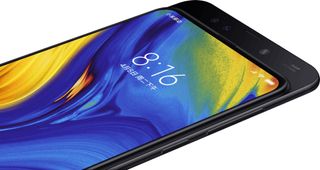
(Image: © Xiaomi)
Also bounding onto the 5G bandwagon with a mighty leap is China's Xiaomi. Its Mi Mix 3 will also feature 5G, and cost just £520 when it debuts in May 2019. This affordable marvel democratises access to 5G by sitting on a platform built from Qualcomm's Snapdragon 855 SoC and its Snapdragon X50 modem. Even better, a cooling system built around a six-layer graphite heat pipe should mean this platform doesn't melt in your hands like chocolate.
Xiaomi also flaunted its Mi 9. This launches next week (28 February 2019), at the practically give-away price of €449 (about £390) for a 6GB RAM + 64GB storage version, and from €499 (about £434) for the 128GB incarnation.
SAMSUNG AT MWC 2019
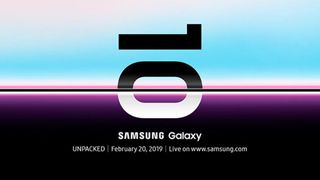
The Samsung Galaxy S10 range was unveiled at an event just before MWC 2019
Samsung traditionally puts on a big show at Mobile World Congress, but MWC 2019 will be slightly different: the Samsung Galaxy S10, S10 Plus and S10E were launched just before the event.
Samsung's Galaxy Unpacked event took place on February 20, 2019 and at the show, the company officially launched the Samsung Galaxy S10e, the Samsung Galaxy S10 and the Samsung Galaxy S10 Plus. It also took the wraps off the Samsung Galaxy S10 5G.
We assume that all of those handsets will make a second appearance on Samsung's stand at MWC.
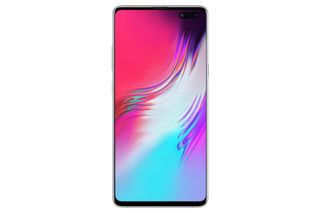
The Samsung Galaxy S10
FOLDABLE PHONES FROM SAMSUNG, HUAWEI AND LG?
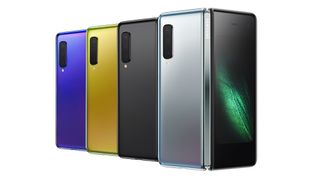
The Samsung Galaxy Fold
The other big bit of news from Unpacked was that Samsung showed off the final version of its highly anticipated folding the the Samsung Galaxy Fold.
However, while it was shown on stage, it was not available for us, or any other journalists, to get our hands on. There are likely two explanations for that. The first is that the phone is not quite final and so Samsung didn't want people to try it out and complain of bugs. That said, it must be close to final as it goes on sale at the end of April. The second possible explanation is that the phone is fully working and Samsung wanted to hold something back for MWC. So perhaps MWC will be our first opportunity to go hands on with the Samsung Galaxy Fold. Or perhaps we'll just get to look at one inside a locked display cabinet. We'll find out for sure next week when we're at show.
If Samsung does take the Galaxy Fold to MWC it might not have everything all its own way in terms of foldable phone technology. Huawei has a foldable phone in the works that looks set make its debut at MWC and throw in 5G as well.
Indeed, Huawei has recently teased the arrival of a folding phone in its teaser for MWC 2019, so it now looks very likely that something along these lines is going to be shown off. It might not be available to buy, it might still be a prototype, but we should see a foldable phone from Huawei at MWC 2019. And given how good recent Huawei handsets have been, a folding Huawei phone will certainly be one that generates a lot of interest.
There are also rumours of folding phones from LG and Motorola, though LG recently said that it's too early for it to be making a folding phone, so don't expect to see the LG Bendi at the event. It's also possible that Xiaomi's folding phone prototype might make a public appearance.
- Check out the best Android phones on the planet
SONY AT MWC 2018
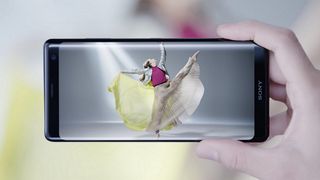
Another Sony Xperia phone is on the way at MWC 2019
The freshest news about Sony's incoming Xperia XZ4 flagship phone is how it is bringing the fight to the Samsung Galaxy S10 at MWC 2019 with a massive battery and class-leading camera system.
The powerful new phone is slated to come with a 4,400 mAh battery, which beats the reported 4,100 mAh battery unit coming in the S10 Plus and absolutely dwarfs the 3,300 mAh unit called to come in the standard S10.
Regarding that class-leading camera setup, a recent leak has suggested that the XZ4 will feature a triple camera setup where the main camera will capture at a very impressive 52-megapixels, the best of any phone.
Based on the rumours we've heard so far, the Sony Xperia XZ4 will come running the latest Qualcomm Snapdragon 855 processor, as well as boasting a 6.2-inch screen in a tall 21:9 aspect ratio designed by its Bravia engineering team. That skinny aspect ratio was pretty much confirmed by Sony in a tweet to confirm its MWC press conference, which read "Embrace a new perspective". The press conference takes place at 08.45 CET on Monday 25 February.
Sony phones have lagged a little behind the competition in terms of design in recent years, but the Xperia XZ4 is being tipped to be a fantastic-looking phone as well as a very powerful one. Considering the company's expertise in screen and camera technology, this should be well worth waiting for.
Considering Sony has been working with a six-month cycle for its flagship phone launches, and that Sony usually has an event at Mobile World Congress, it's highly probable that the Sony Xperia XZ4 will be at least shown off at MWC 2019 – even if it doesn't go on sale to the masses straight away.
As well as a new full size Xperia, there may also be an accompanying Compact version, if Sony's launch history is anything to go by.
- If you need a gaming phone then we've got you covered
NOKIA AT MWC 2018
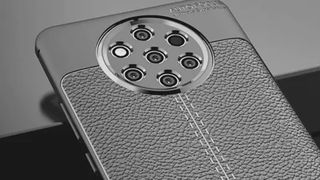
This elaborate camera mechanism could be shown off at MWC 2019
(Image: © GizChina)
Nokia had a strong showing at MWC 2018, so it may well be back for more this year – keep your eyes peeled for the Nokia 9 making its bow, especially because it looks set to pack a truly astonishing amount of cameras.
This is a phone that's been a long time coming, so if it does appear at MWC 2019, there's likely to be a lot of interest around it.
XIAOMI AT MWC 2019
Xiaomi's Senior Vice President Xiang Wang tweeted that the Xiaomi Mi 9 would be launched on February 24, which we assume will be at MWC. The tweet was accompanied with an image showing the handset's iridescent blue/green back and its triple camera, which was later confirmed to be a 48MP set-up. The handset will be powered by a Snapdragon 855 processor and will feature an in-screen fingerprint reader and dedicated Google Assistant button. Here's everything we know about the Xiaomi Mi 9 so far.
It has also been said that Xiaomi will "possibly" be launching its Mi Mix 3 5G at MWC this year.
HONOR AT MWC 2019
Although we don't exactly know what Honor will be announcing at MWC, the company has sent out media invites for a briefing on Tuesday 26 February. The invite is titled "See the game changer" which hints at a phone that's optimised for gaming. In other words, a fast one with AI smarts, quite possibly powered by the same Kirin 980 processor that's in the Honor View 20. Or perhaps the View 20 is the phone that the invite refers to. We'll be at the event so we'll let you know.
ONEPLUS, HTC, OPPO AND... ENERGIZER?
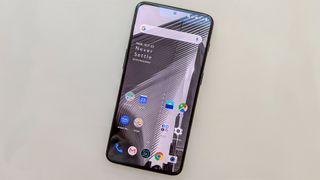
Will the OnePlus 7 look like this?
(Image: © Ben Geskin)
Of the other big names, we're not sure what (if anything) the likes of OnePlus and HTC are going to bring to MWC 2019. There's a chance we'll see some new hardware from these two manufacturers, but it's still a little early for the HTC U13 or the OnePlus 7.
Oppo should be in attendance as well, increasing its visibility in Europe and the US, though as for specific handsets we haven't heard much from the rumour mill so far.
We might just get a preview of Oppo's new camera technology, which offers up 10x optical zoom, apparently, though the company is also said to have a foldable phone in the works.
Although we don't exactly know what Honor will be announcing at MWC, the company has sent out media invites for a briefing on Tuesday 26 February. The invite is titled "See the game changer" which hints at a phone that's optimised for gaming. In other words, a fast one with AI smarts, quite possibly powered by the same Kirin 980 processor that's in the Honor View 20. Or perhaps the View 20 is the phone that the invite refers to. We'll be at the event so we'll let you know.
Smaller names will be making a splash too: Energizer (the battery company) has said it's going to be unveiling no fewer than 26 handsets at MWC 2019, so expect phones with huge batteries and perhaps a pop-up selfie camera or two as well. It's also promising one of these phones will be foldable, though quite how advanced the tech is going to be, we're not sure.
WILL APPLE AND GOOGLE BE AT MWC 2019?
Both Apple and Google usually save their phone launches for their own events. Apple doesn't like mixing with its rivals so will be a MWC 2019 no-show, but Google will be there supporting its Android partners and promoting its mobile offerings, even though it is almost certain it won't have any new devices to unveil at the event. The Google Pixel 4, Pixel 3 Lite, new Google Home and Pixel Watch will all be coming later this year.
So it looks as though this year's show is going to be quite something. T3 will be there from Saturday 23 February bringing you news and early reviews of all the key phones.





